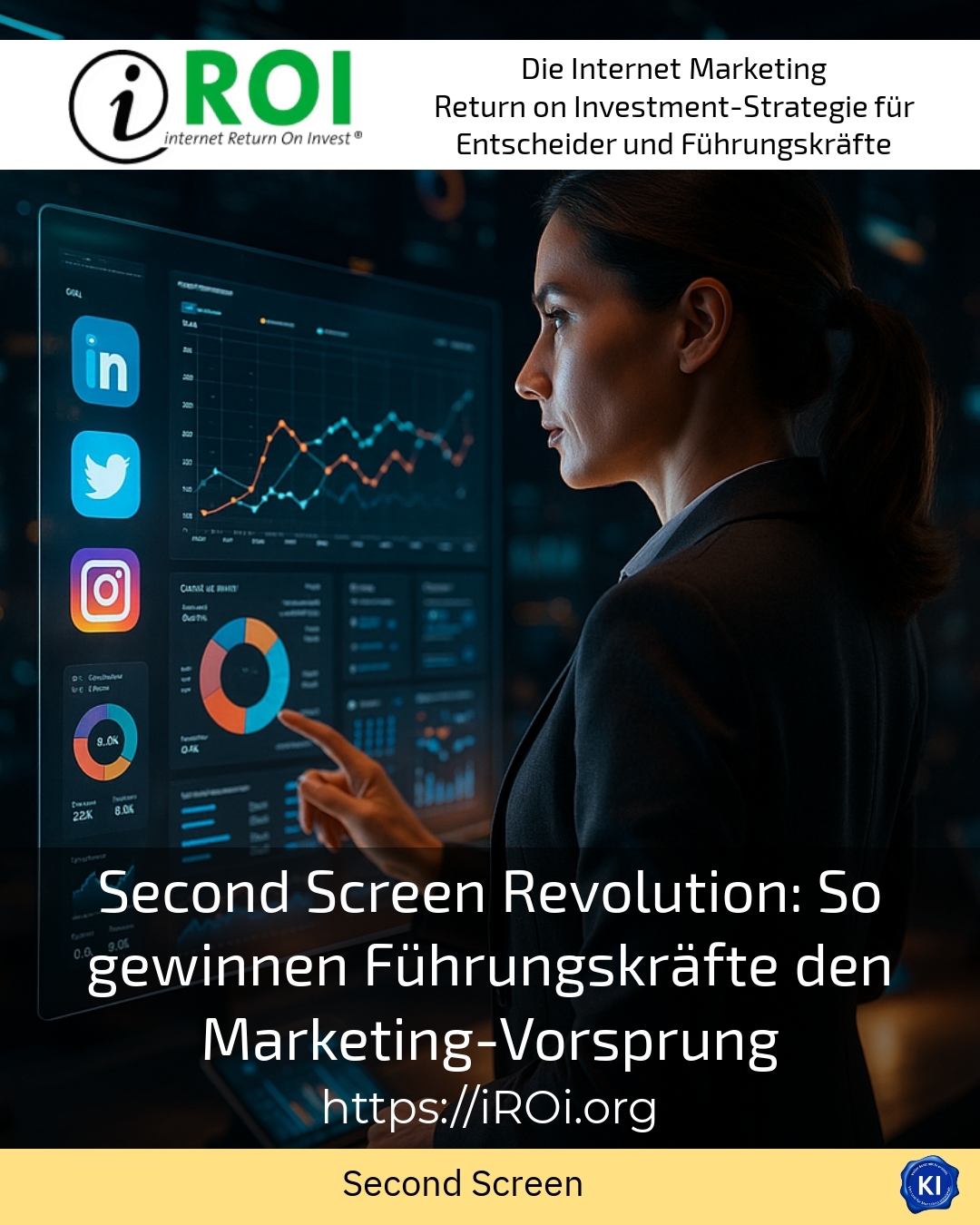The world of marketing has changed due to the increasing use of Second Screen-devices has changed considerably. These are additional devices that are used in parallel with televisions or other primary screens. This development makes it possible to provide additional interactive content and reach viewers in new ways. In this article, we will look at the opportunities and challenges of second screen marketing and how leaders can take the lead in this area.
What is second screen?
Second screen refers to the simultaneous use of an additional device, such as a smartphone or tablet, while watching television or consuming other multimedia content. This combination of media opens up new possibilities for interactive applications and social interaction. For example, viewers can search for additional information about a programme, discuss it on social networks or use interactive apps to enhance the viewing experience[1][2][3].
Strategies for second screen marketing
In order to Second Screen effectively, several strategies make sense:
Interactive content and personalisation
It is crucial to create interactive and personalised content that speaks directly to the viewer. For example, brands can drive engagement through synchronised advertising on the primary screen and complementary content on the second screen[1][4]. An example of interactive content is the use of specialised apps that provide additional information about a programme or offer interactive games[5].
Social interaction
Social media plays a central role in second-screen marketing. Users utilise platforms such as Twitter and Facebook to discuss content while watching TV and interact with other viewers in real time. Brands can use targeted campaigns on these platforms to increase awareness and build a community around their product or brand[2][3].
Application examples from the industry
A well-known example of second-screen marketing is Chevy's campaign during the Super Bowl. Chevy provided an app that offered additional content and participatory activities that integrated the viewer directly into the viewing experience. This led to an increase in viewer interaction and engagement[4].
BEST PRACTICE with one customer (name hidden due to NDA contract)In a project to promote a new TV format, a second screen strategy was developed that provided special apps and interactive content during the programme. This additional content included background information and trivia questions that viewers could complete on their smartphone or tablet while watching the programme. The campaign led to a significant increase in viewer engagement and improved brand perception.
Benefits of the second screen for managers
Executives can gain the edge in their market by utilising second screen marketing strategies wisely. Through targeted interactions across multiple screens, brands can better reach their target audience and increase conversions. IROI coaching will help you develop and implement these strategies to utilise the full potential of second screen and strengthen your brand presence.
My analysis
The use of the second screen offers companies numerous opportunities to increase interaction with their customers and boost advertising efficiency. Through creative content and interactive applications, brands can be present on several screens at the same time and thus capture the attention of viewers in multiple ways. IROI coaching helps you to fully utilise the potential of the second screen and future-proof your marketing strategy.
Further links from the text above:
– Second Screen Advertising: 4 Proven Strategies to Attract and Engage
– How Second Screen Technology is Transforming Viewing Habits
– Second Screen: An Online Marketing Opportunity
For more information and if you have any questions, please contact Contact us or read more blog posts on the topic internet Return on Investment - Marketing here.
















